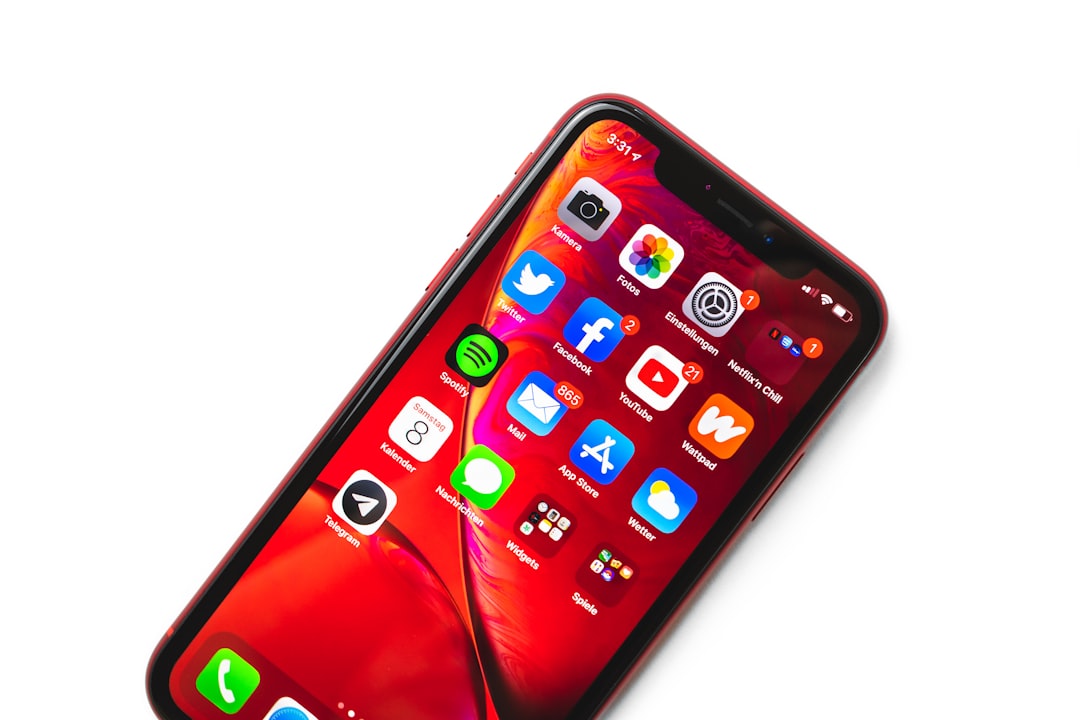SMS-iT campaigns, also known as SMS marketing campaigns, are a form of marketing that utilizes text messages to communicate with customers and promote products or services. These campaigns involve sending targeted messages to a list of subscribers who have opted in to receive these messages.
SMS-iT campaigns work by using a software platform that allows businesses to send bulk text messages to their subscribers. These messages can be personalized and include a call-to-action, such as a link to a website or a coupon code. The software also provides analytics and tracking capabilities, allowing businesses to measure the success of their campaigns.
In today’s marketing landscape, SMS-iT campaigns have become increasingly important. With the rise of mobile devices and the prevalence of text messaging as a communication method, businesses have recognized the potential of SMS marketing to reach customers in a direct and personal way. SMS-iT campaigns offer a cost-effective and efficient way to engage with customers and drive results.
Key Takeaways
- SMS-iT campaigns are a form of mobile marketing that use text messages to reach customers.
- Benefits of SMS-iT campaigns include high open rates, increased engagement, and cost-effectiveness.
- To set up your first SMS-iT campaign, choose a provider, build your list, and create your message.
- Best practices for effective SMS-iT campaigns include keeping messages short and relevant, personalizing messages, and including a clear call-to-action.
- Segmenting your audience based on demographics, behavior, or interests can improve the effectiveness of your SMS-iT campaigns.
Benefits of SMS-iT Campaigns for Your Business
1. Increased engagement with customers: SMS-iT campaigns have been shown to have higher engagement rates compared to other forms of marketing, such as email marketing. Text messages have an average open rate of 98%, compared to email open rates that typically range from 20-30%. This means that SMS-iT campaigns have a higher chance of reaching and being read by customers.
2. Higher open and response rates compared to email marketing: In addition to higher open rates, SMS-iT campaigns also have higher response rates compared to email marketing. Studies have shown that text messages have a response rate of 45%, while email response rates are typically around 6%. This means that SMS-iT campaigns are more likely to generate a response from customers, whether it be making a purchase or taking advantage of a promotion.
3. Cost-effective and measurable: SMS-iT campaigns are a cost-effective marketing strategy, especially when compared to traditional forms of advertising such as print or television. The cost of sending text messages is relatively low, and businesses can reach a large number of customers with a single message. Additionally, SMS-iT campaigns are highly measurable, allowing businesses to track key metrics such as open rates, response rates, and conversions. This data can be used to optimize future campaigns and improve overall marketing strategies.
4. Ability to reach customers in real-time: One of the biggest advantages of SMS-iT campaigns is the ability to reach customers in real-time. Text messages are typically read within minutes of being received, making them an effective way to deliver time-sensitive information or promotions. This real-time communication can help businesses stay top-of-mind with customers and drive immediate action.
How to Set Up Your First SMS-iT Campaign
1. Choosing the right SMS-iT provider: The first step in setting up your first SMS-iT campaign is choosing the right provider. There are many SMS marketing platforms available, so it’s important to research and compare different options. Consider factors such as pricing, features, ease of use, and customer support when evaluating providers.
2. Building your subscriber list: Once you have chosen an SMS-iT provider, the next step is to build your subscriber list. This can be done by promoting your SMS campaign through various channels, such as your website, social media, or in-store signage. Offer an incentive for customers to opt-in to receive text messages, such as a discount or exclusive content.
3. Creating your first SMS-iT campaign: When creating your first SMS-iT campaign, it’s important to keep the message short and concise. Text messages have a character limit, typically around 160 characters, so make sure to get your message across in a clear and concise way. Personalize the message by addressing the recipient by name, and include a clear call-to-action, such as a link to a website or a coupon code.
4. Setting up automated campaigns: Once you have set up your first SMS-iT campaign, consider setting up automated campaigns to save time and ensure consistent communication with your subscribers. Automated campaigns can be triggered by specific actions or events, such as a customer making a purchase or signing up for a newsletter. These campaigns can help nurture leads and drive customer engagement.
Best Practices for Creating Effective SMS-iT Campaigns
| Best Practices for Creating Effective SMS-iT Campaigns | Description |
|---|---|
| Segmentation | Divide your audience into smaller groups based on demographics, behavior, or preferences to send targeted messages. |
| Personalization | Use the recipient’s name, location, or past interactions to make the message more relevant and engaging. |
| Clear Call-to-Action | Include a clear and concise message that prompts the recipient to take action, such as clicking a link or making a purchase. |
| Timing | Send messages at the right time, such as during business hours or when the recipient is most likely to be available. |
| Frequency | Avoid sending too many messages in a short period of time to prevent overwhelming the recipient and causing them to opt-out. |
| Compliance | Ensure that your SMS-iT campaign complies with local laws and regulations, such as obtaining consent from recipients and providing opt-out options. |
1. Keeping messages short and concise: As mentioned earlier, text messages have a character limit, so it’s important to keep your messages short and to the point. Get your message across in a clear and concise way, and avoid using unnecessary words or jargon. Use abbreviations or symbols when appropriate to save space.
2. Personalizing messages: Personalization is key to creating effective SMS-iT campaigns. Address recipients by name whenever possible, and tailor the message to their specific interests or preferences. This can be done by segmenting your audience (more on that later) and sending targeted messages based on their demographics, purchase history, or engagement with previous campaigns.
3. Including a clear call-to-action: Every SMS-iT campaign should include a clear call-to-action that tells recipients what you want them to do next. This could be visiting a website, making a purchase, or taking advantage of a promotion. Make sure the call-to-action is easy to understand and includes any necessary instructions or links.
4. Timing messages appropriately: Timing is crucial when it comes to SMS-iT campaigns. You want to send messages at a time when recipients are most likely to read and respond to them. Avoid sending messages too early in the morning or too late at night, as this may annoy recipients. Consider factors such as time zones and the nature of your business when determining the best time to send messages.
How to Segment Your Audience for Targeted SMS-iT Campaigns
1. Importance of audience segmentation: Audience segmentation is the process of dividing your subscriber list into smaller, more targeted groups based on specific criteria. This allows you to send more relevant and personalized messages to each segment, increasing the effectiveness of your SMS-iT campaigns. Segmentation can be based on factors such as demographics, purchase history, engagement with previous campaigns, or geographic location.
2. Different ways to segment your audience: There are many different ways to segment your audience for targeted SMS-iT campaigns. Some common segmentation criteria include age, gender, location, interests, purchase history, and engagement level. You can also create segments based on specific actions or events, such as customers who have abandoned their shopping carts or customers who have made a recent purchase.
3. Creating targeted campaigns based on audience segments: Once you have segmented your audience, you can create targeted campaigns that are tailored to each segment’s specific needs and preferences. For example, you could send a special promotion to customers who have made a recent purchase, or send a reminder to customers who have abandoned their shopping carts. By sending more relevant and personalized messages, you can increase engagement and drive results.
Examples of Successful SMS-iT Campaigns from Other Businesses

1. Case studies of successful SMS-iT campaigns: There are many examples of successful SMS-iT campaigns from businesses across various industries. For example, a clothing retailer may send text messages to their subscribers with exclusive discounts or early access to new collections. A restaurant may send text messages with special offers or reminders about upcoming events. These campaigns have been shown to drive customer engagement and increase sales.
2. Analysis of what made these campaigns successful: Successful SMS-iT campaigns share several common characteristics. They are short and concise, making it easy for recipients to read and understand the message. They are personalized, addressing recipients by name and tailoring the message to their specific interests or preferences. They include a clear call-to-action, telling recipients what they need to do next. And they are sent at the right time, when recipients are most likely to read and respond to the message.
3. Inspiration for your own SMS-iT campaigns: Looking at successful SMS-iT campaigns from other businesses can provide inspiration for your own campaigns. Take note of the strategies and tactics that worked well, and think about how you can adapt them to fit your own business and target audience. Experiment with different ideas and approaches, and don’t be afraid to test and iterate until you find what works best for your business.
Tips for Measuring the Success of Your SMS-iT Campaigns
1. Key metrics to track: There are several key metrics that you should track to measure the success of your SMS-iT campaigns. These include open rates, response rates, conversion rates, and unsubscribe rates. Open rates measure the percentage of recipients who open your messages, while response rates measure the percentage of recipients who take action based on your messages (such as making a purchase or clicking on a link). Conversion rates measure the percentage of recipients who complete a desired action, such as making a purchase or signing up for a newsletter. Unsubscribe rates measure the percentage of recipients who opt out of receiving further messages.
2. Tools for measuring SMS-iT campaign success: Most SMS-iT providers offer built-in analytics and tracking capabilities that allow you to measure the success of your campaigns. These tools provide real-time data on key metrics such as open rates, response rates, and conversions. You can also use third-party tools such as Google Analytics to track website traffic and conversions that result from your SMS-iT campaigns.
3. How to use data to improve future campaigns: The data collected from your SMS-iT campaigns can be used to improve future campaigns and optimize your overall marketing strategy. Analyze the data to identify trends and patterns, and use this information to make data-driven decisions. For example, if you notice that certain messages or offers have higher response rates, you can replicate those in future campaigns. If you notice that certain segments of your audience have higher conversion rates, you can focus your efforts on targeting those segments.
Common Mistakes to Avoid When Running SMS-iT Campaigns
1. Sending too many messages: One common mistake that businesses make when running SMS-iT campaigns is sending too many messages. Bombarding your subscribers with frequent messages can lead to annoyance and result in them opting out of receiving further messages. It’s important to find the right balance and only send messages when you have something valuable or relevant to say.
2. Not providing value to subscribers: Another common mistake is not providing value to subscribers. Your SMS-iT campaigns should offer something of value to recipients, whether it be a special promotion, exclusive content, or helpful information. If your messages are not providing value, recipients are more likely to ignore or unsubscribe from your messages.
3. Failing to comply with regulations: When running SMS-iT campaigns, it’s important to comply with regulations and guidelines set by regulatory bodies such as the Federal Communications Commission (FCC) or the Cellular Telecommunications Industry Association (CTIA). These regulations include obtaining proper consent from subscribers, providing an opt-out option, and not sending unsolicited messages.
4. Ignoring unsubscribe requests: Lastly, it’s important to honor unsubscribe requests from subscribers. If a recipient no longer wants to receive messages from you, it’s important to remove them from your subscriber list promptly. Ignoring unsubscribe requests can damage your reputation and result in legal consequences.
Integrating SMS-iT Campaigns with Your Overall Marketing Strategy
1. Importance of integrating SMS-iT campaigns with other marketing channels: Integrating SMS-iT campaigns with your overall marketing strategy is important for creating a cohesive and consistent brand experience for your customers. SMS-iT campaigns can complement other marketing channels, such as email marketing, social media, or print advertising, by reinforcing your message and driving engagement.
2. Examples of how SMS-iT campaigns can complement other channels: For example, you can use SMS-iT campaigns to drive traffic to your website or social media profiles by including links in your messages. You can also use SMS-iT campaigns to promote exclusive offers or discounts that are only available to your SMS subscribers. By integrating SMS-iT campaigns with other channels, you can create a multi-channel marketing strategy that reaches customers through various touchpoints.
3. Tips for creating a cohesive marketing strategy: To create a cohesive marketing strategy, it’s important to align your messaging and branding across all channels. Use consistent language, imagery, and design elements in your SMS-iT campaigns as well as other marketing materials. Coordinate your messaging and timing across different channels to create a seamless customer experience.
Choosing the Right SMS-iT Provider for Your Business Needs
1. Factors to consider when choosing an SMS-iT provider: When choosing an SMS-iT provider, there are several factors to consider. These include pricing, features, ease of use, customer support, and scalability. Consider your budget and the specific needs of your business when evaluating providers.
2. Comparison of popular SMS-iT providers: There are many popular SMS-iT providers available, each with their own strengths and weaknesses. Some popular providers include Twilio, EZ Texting, TextMagic, and SimpleTexting. Compare the features and pricing of different providers to find the one that best fits your business needs.
3. Questions to ask when evaluating providers: When evaluating SMS-iT providers, it’s important to ask questions to ensure they can meet your specific requirements. Some questions to consider asking include:
– What is the pricing structure and are there any additional fees?
– What features are included in the platform?
– Is the platform easy to use and navigate?
– What level of customer support is provided?
– Can the platform scale as your business grows?
In conclusion, SMS-iT campaigns can be a powerful tool for businesses looking to engage with customers in a cost-effective and measurable way. By following best practices and avoiding common mistakes, businesses can create effective SMS-iT campaigns that drive results. Choosing the right SMS-iT provider and integrating SMS-iT campaigns with your overall marketing strategy are also key factors in achieving success with SMS-iT campaigns.
If you’re interested in learning more about the unique selling proposition (USP) for SMS-iT CRM, you should definitely check out this informative article on the SMS-iT blog. It delves into the importance of having a strong USP and how it can set your business apart from the competition. Understanding your USP is crucial for effective marketing and customer engagement. So, if you want to take your SMS campaigns to the next level, make sure to read this article: Unique Selling Proposition (USP) for SMS-iT CRM.







